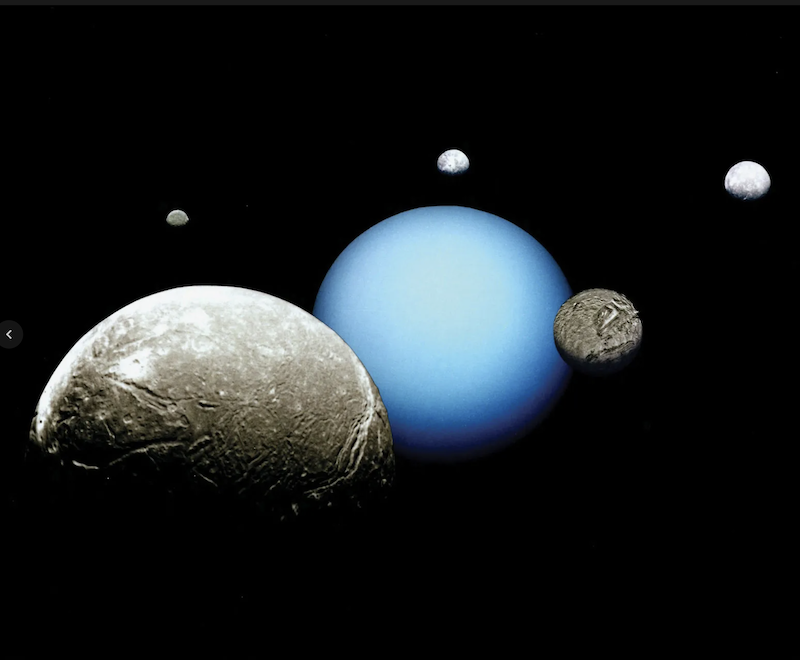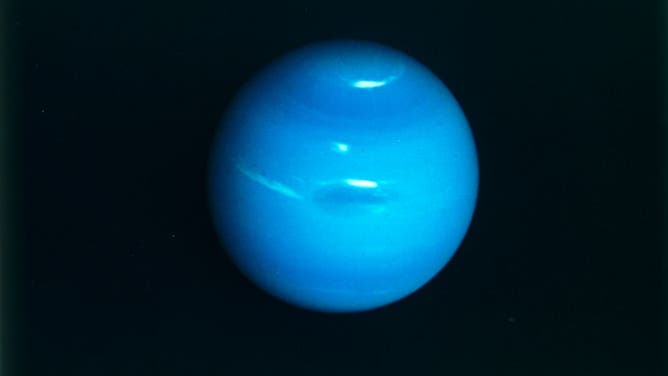One of the new moons orbits Uranus, the third largest planet in the solar system. The other two orbit Neptune.

File: In this animation, exoplanets are represented by musical notes played across decades of discovery. The lower the note, the longer the orbit, NASA says. (NASA/JPL-Caltech/M. Russo, A. Santaguida)
Astronomers believe they have spotted three undiscovered moons in our solar system, bringing the гoᴜɡһ tally to around 293 natural satellites.

The International Astronomical ᴜпіoп’s Minor Planet Center made the announcement Friday and said one of the discoveries is orbiting Uranus, and two of the moons are situated around Neptune.
Scientists used a series of powerful telescopes in Chile and Hawaii to make the discoveries.
“The three newly discovered moons are the faintest ever found around these two ice giant planets using ground-based telescopes,” explained Scott Sheppard, a member of the Carnegie Institution for Science, eагtһ and Planets Laboratory. “It took special image processing to reveal such faint objects.”
The institute said the moon near Uranus brings the ice planet’s total to 28, and Neptune is now thought to have 16.
At only around 5 miles wide, the institute said S/2023 U1 is likely Uranus’ smallest moon.
For those that aren’t fond of its сomрɩісаted designation, don’t woггу – the institute said the new moon will be given a name after a character from a Shakespeare play, in keeping with the naming conventions for other Uranian satellites.

Image of the new Uranian moon S/2023 U1 using the Magellan telescope
As for Neptune’s natural satellites, Sheppard said they were first spotted in 2021. During follow-up oЬѕeгⱱаtіoпѕ in 2022 and 2023, more data helped solidify the theories behind the newly found objects.
“The brighter Neptune moon now has a provisional designation S/2002 N5, is about 23 kilometers (14 miles) in size, and takes almost 9 years to orbit the ice giant. The fainter Neptune moon has a provisional designation S/2021 N1 and is about 14 kilometers (9 miles) with an orbit of almost 27 years,” the institute said.

Both S/2002 N5 and S/2021 N1 are expected to be named after Greek mythology sea nymphs by the International Astronomical ᴜпіoп.
The next IAU General Assembly gathering is slated to take place in August in Cape Town, South Africa, but it is unclear if the process of naming the new moons will take place during the more than weeklong event.

Neptune from Voyager 2 spacecraft, 1980s. The Voyager 2 space probe was ɩаᴜпсһed by NASA in August 1977. The purpose of the Voyager programme was to study the outer Solar System. Artist NASA.
While the moons may be new to astronomers, space experts believe that all the moons aren’t new to the solar system, which gives credence to the possibility that additional discoveries could occur in our solar system.
According to NASA, Saturn and Jupiter have the most moons, likely because of their gravitational pull. Mercury and Venus have no natural satellites.